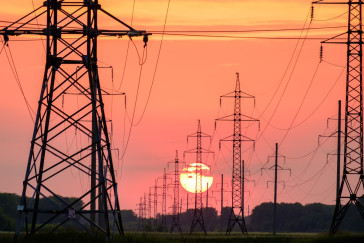A number of studies have investigated the possibility of extending Electric Vehicle (EV) Lithium-ion battery life by deliberately choosing to store the battery at a low to moderate state of charge. Recently, there has been considerable interest shown in the scheme of a deliberate discharge and subsequent recharge of a battery to yield an overall reduction in battery degradation whilst carrying out Vehicle-to-Grid (V2G) services (so-called `beneficial V2G'). This paper presents an investigation of the conditions permitting successful operation of this method by examining incremental time variation of the relevant parameters for two types of cells from results of the same physical size and chemistry, and similar capacity. These two types of cells are found in this present analysis to offer differing degrees of suitability for beneficial V2G.
DOCUMENT
Combining electric cars with utility services seems to be a natural fit and holds the promise to tackle various mobility as well as electricity challenges at the same time. So far no viable business model for vehicle-to-grid technology has emerged, raising the question which characteristics a vehicle-to-grid business model should have. Drawing on an exploratory study amongst 189 Dutch consumers this study seeks to understand consumer preferences in vehicle-to-grid business models using conjoint analysis, factor analysis and cluster analysis. The results suggest that consumers prefer private ownership of an EV and a bidirectional charger instead of community ownership of bidirectional charger, they prefer utility companies instead of car companies as the aggregator and they require home and public charging. The most salient attributes in a V2G business model seem to be functional rather than financial or social. The customer segment with the highest willingness to adopt V2G prefers functional attributes. Based on the findings, the study proposes a business model that incorporates the derived preferences
DOCUMENT

This OP was deployed in two phases, focusing on Vehicle-to-Home (V2H) and Vehicle-to-Grid (V2G). Its first phase took place at a private residence in Loughborough and ran from March 2017 up to December 2017. This phase 1 is also referred to as the ‘Loughborough pilot’. The second phase took place from February 2020 until present at a comparable residence in Burton-upon-Trent, thereafter, referred to as the ‘Burton pilot’ or ‘phase 2’. Both pilots included bi-directional chargers, Electric Vehicles (EV), Battery Static Storage (BSS) and rooftop solar PhotoVoltaic panels (PV).The main goals of this pilot were to demonstrate the added value of V2H and V2G of using additional energy storage and PV in households.Challenges encountered in the project include interoperability issues, particularly in phase 1, and the unforeseen development of the homeowner selling his house, meaning a new location needed to be found. However, this challenge ultimately provided an excellent opportunity to implement lessons for interoperability and to act upon the recommendations from the intermediate analysis of the Loughborough pilot. This report is mainly focussed on phase 1 (Loughborough), and additional analysis for Burton-upon-Trent (phase 2) can be found in the appendix.
DOCUMENT

Het eerste integrale onderzoek ter wereld naar een stadsbreed, toekomstbestendig en flexibel elektriciteitssysteem. Het ROBUST project richt zich op toenemende lokale congestieproblemen in stadsregio's in samenhang met de toenemende volatiliteit in de landelijke energiemarkten.
